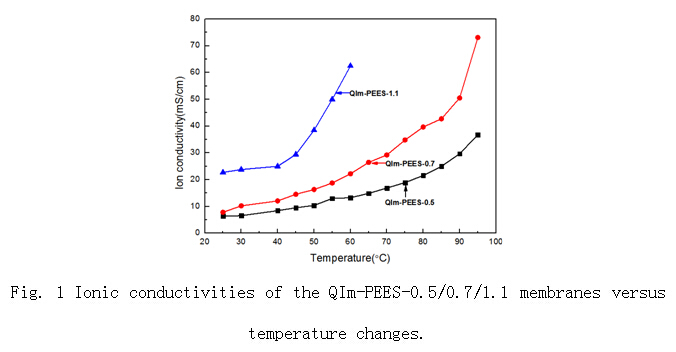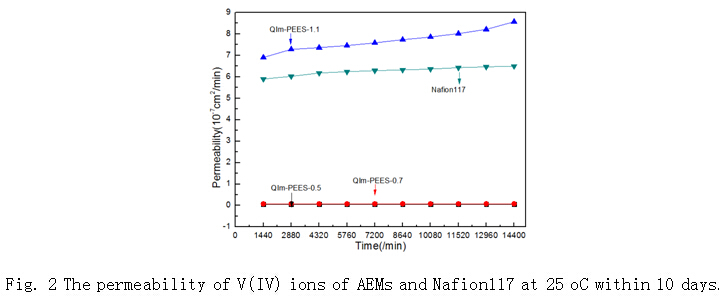As a type of novel rechargeable battery, the All-Vanadium Redox Flow Battery (VRB) is considered as a promising energy storage system for electric vehicles and large-scale grid connected equipment.Owing to its deep-discharge capability, flexible design, long cycle life, fast response time, low cost,etc. , the Vanadium Redox Flow Battery has received more and more attention during the past decades.The proton exchange membrane, a key component of the VRB, plays an important role in the whole battery performance, which can not only separate two sides of electrolytes to prevent cross-contamination, but also provide ionic conductive channels and complete the circuit during charge-discharge processes.
Nafion® membranes are identified as the best suitable membranes for the VRB system among most of the commercial membranes in view of high ionic conductivity, good chemical stability and mechanical property. However, the intrinsic issues of Nafion® membranes, including high permeability of vanadium ions and short lifespan, have limited its further large-scale applications. Compared with Nafion® membranes, anion exchange membranes (AEMs) exhibit distinctive properties, especially low vanadium ions crossover, which is mainly attributed to the Donnan exclusion effect between positively charged groups and vanadium ions.
Recently, three different imidazolium functionalized poly(ether ether sulfone) based on anion exchange membranes at varied ionization levels (QIm-PEES-0.5/0.7/1.1) for VRBs were prepared by researchers at the Functional Membranes Material Group of Polymers and Composites Division. Meanwhile, the properties of the obtained membranes, such as ionic conductivity, ion exchange capacity (IEC), water uptake, chemical stability, vanadium ions permeability and cell charge-discharge performance were carefully investigated. In contrast, the optimized QIm-PEES-0.7 exhibited not only high ionic conductivity, up to 73.1 mS/cm (Nafion117 83 mS/cm), but also excellent chemical stability in the strong oxidative VO2+ environment with weight loss just 1.6% and 6.1% for Nafion117. In addition, a maximum Coulombic efficiency (up to 96.5 % at the current density of 120 mA/cm2 ) was achieved in a single cell assembled with the QIm-PEES-0.7 membrane. This this result was in good agreement with its lower vanadium ions permeability in 1.5mol VOSO4 solution for 10 days in room temperature (0.07 x 10-7cm2/min VS 6.49 x 10-7cm2/min for Nafion117 ). Compared with Nafion117, the VRB assembled with the QIm-PEES-0.7 membrane had the equivalent voltage efficiency (up to 86.4 %) and energy efficiency (up to 76.1 %) at 60 mA/cm2, and good cycling stability in VRB at 80 mA/cm2. More importantly, the preparation cost of the QIm-PEES serials membranes were more economic than that of Nafion117.


Di Lu ludi@nimte.ac.cn
All Images by![]()

